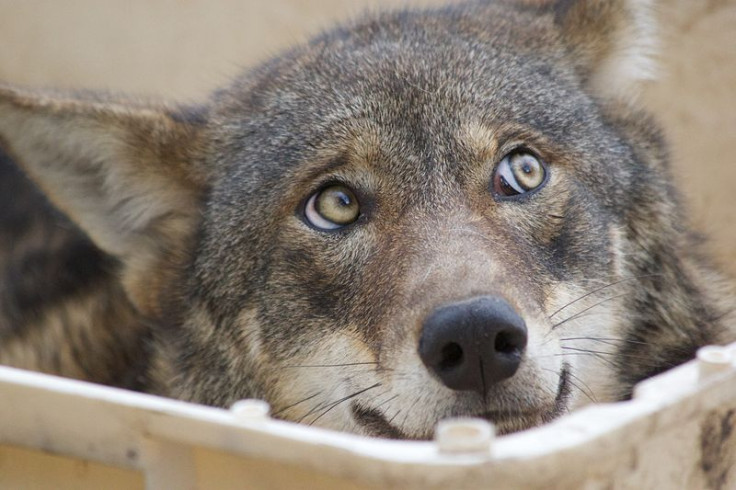Effort to prevent 'coywolf' hybrid wiping out critically endangered red wolves is working

Conservation efforts to stop coyotes wiping out the critically endangered red wolf through the creation of "coywolf" hybrids appear to be working. Coyotes pose a threat to the genetic integrity of red wolves (Canis rufus) by mating with them, producing these fertile coywolf hybrids.
Red wolf numbers are extremely low, with the IUCN Red List stating there are less than 150 in the wild. Of these, however, no more than 50 are mature individuals. The species went extinct in the wild in 1980, but was reintroduced by the US Fish and Wildlife Service in 1987 to eastern North Carolina. The current population occupies the peninsula between the Albemarle and Pamlico Sounds.
A study published in the journal Biological Conservation has now examined how effective the conservation efforts have been, looking specifically at the "placeholder" concept. This involves coyotes and coywolves being captured, sterilised and re-released as placeholders, which hold territories until they are either displaced or killed by a wolf. It also includes the removal of the placeholder by wildlife managers before a wolf is released.
The team from Utah State University examined the 15-year sterilisation programme and found that between 1999 and 2013, red wolves displaced or killed just under a third of the sterile placeholders. "We evaluated the placeholder concept by examining the number of animals sterilised and released, likelihood of displacement by a wolf, factors influencing displacements, territory fidelity of placeholders, and survival rates and causes of mortality of placeholders and wolves," the team wrote.

"Of the 182 placeholders, 125 were coyotes and 57 were hybrids. From 1999 to 2013, 51 placeholders were displaced or killed by wolves, and 16 were removed by management personnel. Thus, 37% of the placeholders were displaced leading to occupancy by a wolf. Most displacements occurred in winter (43%) and were always by the same sex. Males were more likely to be displaced than females."
Sterilisations were not meant to control the coyote population size, rather they were to stop their DNA being passed to red wolf offspring, lead author Eric Gese told Science magazine. As a result of the efforts, red wolf litters outnumbered hybrid coywolf litters every year. He said purebred red wolves would probably have disappeared without the intervention.
The study comes as US officials consider phasing out the conservation effort because of concerns about its long-term effectiveness, as well as cost. An independent evaluation of the programme also said the conservation effort may not succeed. A decision on it is expected in 2016.
"The future is problematic," said Douglas Smith, who served on the Wildlife Management Institute review. "Problematic doesn't mean there is not a road to success, but they have been stalled at around 100 wolves."
© Copyright IBTimes 2025. All rights reserved.





















